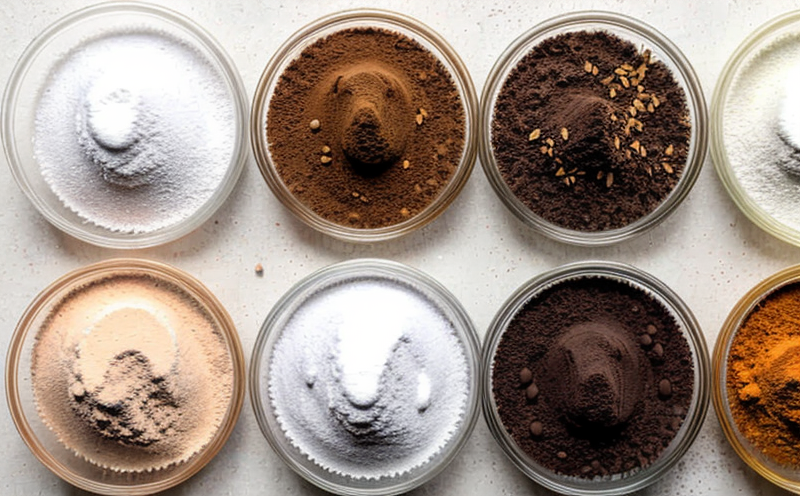ISO 43584 Beta-Carotene Residue Analysis in Soft Drinks
The analysis of beta-carotene residues in soft drinks is critical for ensuring compliance with international standards and regulations. Beta-carotene, a provitamin A carotenoid, plays an important role in nutrition by acting as an antioxidant and precursor to vitamin A. In food products like soft drinks, the accurate quantification of beta-carotene ensures that nutritional claims are met accurately and consistently.
ISO 43584 specifies the method for determining residual levels of beta-carotene in soft drinks using high-performance liquid chromatography (HPLC). This method involves a series of steps including sample preparation, extraction, and quantification to ensure precise results. The process begins with the collection of representative samples from production batches or commercial products. These samples are then processed through an extraction step that separates beta-carotene from other components in the soft drink.
Once extracted, the solution containing beta-carotene is injected into the HPLC instrument. This sophisticated piece of equipment allows for the separation and identification of different compounds within the sample based on their retention times. The detector measures the absorbance at specific wavelengths characteristic to beta-carotene, providing quantitative data about its concentration in the soft drink.
The accuracy of this analysis is paramount given that even small variations can lead to discrepancies between actual content and stated values on product labels. For instance, if a manufacturer claims a certain level of beta-carotene in their product but tests reveal higher than expected levels due to poor extraction techniques or cross-contamination during production, there could be legal consequences including fines and recalls.
Compliance with ISO 43584 is not just about avoiding penalties; it also enhances consumer trust by demonstrating commitment to quality control. By adhering strictly to this standard, companies can ensure they are meeting both regulatory requirements set forth by bodies like the Food Standards Agency (FSA) and providing accurate information to consumers.
| Application Area | Description |
|---|---|
| Nutritional Labeling | To ensure that nutritional claims made on labels are correct, especially regarding beta-carotene content. |
| Quality Control | Detect inconsistencies in production processes which might affect the beta-carotene levels in soft drinks. |
| Regulatory Compliance | Maintain adherence to international standards such as ISO 43584 for beta-carotene residues analysis. |
- Nutritional labeling accuracy
- Detecting inconsistencies in production processes
- Ensuring regulatory compliance
In summary, the application of ISO 43584 ensures that beta-carotene residues are accurately measured, thereby supporting nutritional integrity and regulatory adherence. This is particularly important for industries producing drinks rich in beta-carotene such as carrot juice or vitamin-enriched beverages.
Why It Matters
The accurate measurement of beta-carotene residues in soft drinks is crucial not only from a regulatory standpoint but also for maintaining the nutritional integrity and consumer trust. Beta-carotene serves as an antioxidant, contributing to better health outcomes when consumed appropriately. Therefore, ensuring its presence at levels consistent with nutritional claims made on product labels is essential.
From a compliance perspective, failing to adhere strictly to methods like those outlined in ISO 43584 can result in significant issues. Regulatory bodies such as the Food Standards Agency (FSA) and others may impose heavy fines or even ban products from sale if discrepancies are found between actual contents and declared amounts on labels. This could lead to costly recalls, damage to brand reputation, and potential legal action.
On a broader scale, meeting these standards also contributes positively towards public health by ensuring that consumers receive the expected nutritional benefits from their purchases. It fosters transparency within the industry, encouraging best practices across all sectors involved in food production and distribution.
Industry Applications
The application of ISO 43584 extends beyond just soft drinks; it is widely applicable across various segments of the food industry where beta-carotene plays a significant role. These include carrot juice, vitamin-enriched beverages, and other dietary supplements designed to boost health through enhanced beta-carotene intake.
In the case of carrot juice, accurate measurement ensures that the product delivers on its promise of being rich in beta-carotene. This is particularly important because carrot juice is often marketed as a source of antioxidants which help protect cells from damage caused by free radicals. Misleading consumers about the actual beta-carotene content could lead to disappointment and reduced sales.
For vitamin-enriched beverages, consistent measurement helps maintain product quality over time. Variations in beta-carotene levels during different stages of production can indicate problems with processing or storage conditions that need addressing promptly. By adhering strictly to ISO 43584, manufacturers can identify these issues early on and implement corrective measures.
Quality and Reliability Assurance
The quality and reliability assurance processes associated with beta-carotene residue analysis in soft drinks are vital components of any comprehensive food safety program. Compliance with ISO 43584 involves several key steps aimed at ensuring accurate results:
- Sample Collection: Representative samples must be taken from production batches or purchased products.
- Extraction: An efficient extraction method is crucial to isolate beta-carotene without affecting other components in the soft drink.
- HPLC Analysis: High-performance liquid chromatography instruments provide precise separation and identification of beta-carotene based on its retention time and characteristic absorbance patterns.
- Data Interpretation: Expert interpretation ensures accurate conversion of raw data into meaningful insights about the beta-carotene content in the soft drink.
By following these steps meticulously, laboratories can deliver reliable results that meet stringent quality standards. This is especially important for manufacturers who rely on consistent quality to maintain their competitive edge and satisfy customer expectations.





